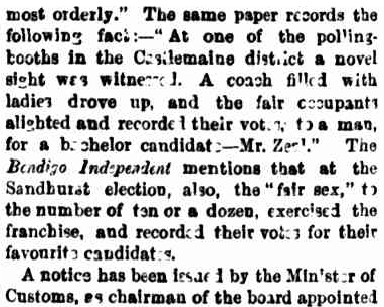Soldiers of the East Surrey Regiment pose with fixed bayonets on the 25th of November, 1940. Chatham, Kent, England. Second World War.

Soldiers of the East Surrey Regiment pose with fixed bayonets on the 25th of November, 1940. Chatham, Kent, England. Second World War.


1877 first edition cover. X
Black Beauty, a novel by English author Anna Sewell, was first published on the 24th of November, 1877.
Considered to be a story about animal rights, the book is about the life of a horse, told in autobiographical form.

Sewell had been barely able to walk since she was fourteen, when injuries to both her ankles were incorrectly treated, and she was an invalid when the book was written and published.
While she lived to see Black Beauty’s initial success, she died of an illness only five months afterwards.

This time in November is typically designated as an awareness week for the Holodomor, Stalin’s forced famine-genocide of millions of Ukrainians in the 1930s.
Above is the Lavra monastery complex in Kyiv, Ukraine’s capital city. The golden tower/flame on the right is the memorial to the genocide.
The deaths of tens of millions in the Soviet Union should serve as a reminder why communism should never again be revived or allowed to thrive – something generations born after the fall of the USSR seem unable to fully understand.
Today is Holodomor Remembrance Day, an international day to remember Stalin’s atrocities in Ukraine in the 1930s. The peasants’ food and grain were confiscated and the borders were closed as millions of ethnic Ukrainians were deliberately starved to death.
The dead were replaced with Russian settlers, creating a situation that still has massive repercussions today.
The genocide is still denied by Russia.

The Holodomor, Stalin’s genocide in Ukraine that killed millions in the 1930s.
‘At that time I lived in the village of Yaressky of the Poltava region. More than a half of the village population perished as a result of the famine. It was terrifying to walk through the village: swollen people moaning and dying. The bodies of the dead were buried together, because there was no one to dig the graves.
There were no dogs and no cats. People died at work; it was of no concern whether your body was swollen, whether you could work, whether you have eaten, whether you could – you had to go and work. Otherwise – you are the enemy of the people.
Many people never lived to see the crops of 1933 and those crops were considerable. A more severe famine, other sufferings were awaiting ahead. Rye was starting to become ripe. Those who were still able made their way to the fields. This road, however, was covered with dead bodies, some could not reach the fields, some ate grain and died right away. The patrol was hunting them down, collecting everything, trampled down the collected spikelets, beat the people, came into their homes, seized everything. What they could not take – they burned.’
(From the memories of Galina Gubenko, Poltava region)

As today is Remembrance Day, here’s an image of British Army Sherwood Foresters keeping warm while waiting for lunch during the Battle of the Somme (First World War). The battle claimed over a million casualties over the 140 days it was fought.

The caption for this photo reads:
“Powder smoke and dust billow as a recoilless rifle team of Co. D, 7th infantry Regiment, 3rd U.S. Infantry Division, fire their weapon at Chinese Communist position on Hill 200 near Qnmong-Myon, Korea. 9 November 1951.”
The Korean War lasted from June 1950 to July 1953.
Reviving an old post, because I like the story!

Australian suffragettes in London in 1911
In the nineteenth century, in the colony of Victoria in Australia, the Electoral Act 1863 was passed. According to the act, “all persons” who owned property were entitled to vote. Though it was not intended to include women in this, there were plenty in the state who did, indeed own property.
In the 1864 elections, some women took advantage of this error and went to the polling stations, where their votes were recorded:

“At one of the polling booths in the Castlemaine district a novel sight was witnessed. A coach filled with ladies drove up, and the fair occupants alighted and recorded their votes.”
The Argus , 5 November 1864, p 4.
The oversight was quickly fixed, and a new law in 1865 once again took voting rights away from women. However, Australia was very early in granting women full voting rights, in 1902.

(Repost from two years ago.)
Today is Dziady in Belarus, which is both a Slavic feast day and the day Belarusians commemorate hundreds of thousands killed in Stalin’s Great Purge during Soviet control of the nation.
Not long before the collapse of the Soviet Union, historian Zianon Pazniak revealed the extent of the executions in the Kurapaty forest near the capital city, Minsk.
At least 30 000 people were killed in Kurapaty between 1937 and 1941, but some estimates put the number as high as 250 000.
People who attended the first commemoration – in 1988 – were attacked by the police, and to this day Kurapaty is not publicly mentioned by the pro-Russian government (run since the 1990s by dictator Alexander Lukashenko).
Pazniak fled the country in 1996 and was granted political asylum in the United States.
The RAF Balloon Command was formed in Britain on the 1st of November, 1938. The organisation was formed in anticipation of German air raids if war broke out.
The Command operated over the skies of the United Kingdom until February of 1945.
Balloons over London during the war.
Buckingham Palace and the Victoria Memorial can be seen.
